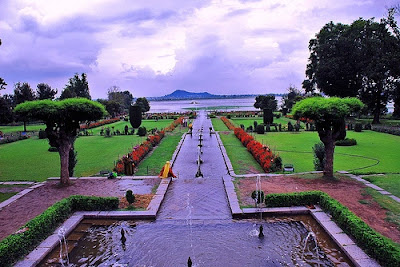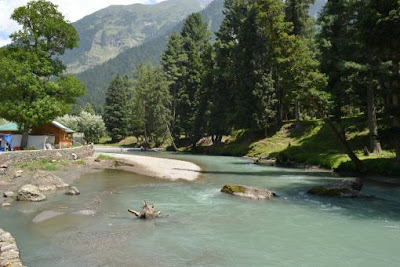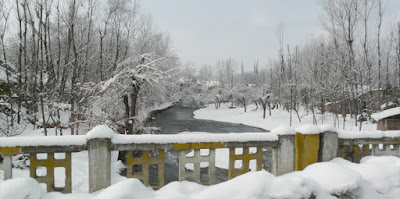Extraordinary Beautiful place on earth || Kashmir (a Paradise) || Blog About The Beauty Of nature || Kashmir || Valley || Jammu and Kashmir State || India.
Sunday, 6 December 2015
Breathtaking juxtaposition Gulmarg view
Monday, 23 November 2015
Wular lake| Achhabal | Harwan
Wednesday, 18 November 2015
The Gulmarg woods, blanketed in snow and adorned with green trees.
Saturday, 14 November 2015
Why Kashmir is known as paradise on earth?
Switzerland of Asia(Kashmir)
Tuesday, 3 November 2015
Lost in admiration | beauty felt, cherished, and celebrated in every breath, every heartbeat.
Sunday, 25 October 2015
Testament to the magnificence of our planet | look at Kashmir
If you're searching for a testament to the magnificence of our planet, look no further than the breathtaking landscapes of Kashmir. Here, amidst untouched nature, you'll discover the true beauty of Earth in all its glory.
From rolling hills to sprawling plains, Kashmir boasts an array of parks, gardens, and historical sites that are nothing short of breathtaking. Capture the awe-inspiring views with your camera as you immerse yourself in the unparalleled beauty of the valley.
Ask anyone who has experienced Kashmir firsthand, and they'll undoubtedly attest to its status as a paradise on Earth. Whether you're drawn to the mist-covered mountains or the enchanting wonderland below, Kashmir promises an unforgettable experience.
With crystalline lakes, dense forests, and snow-capped peaks, Kashmir offers postcard-worthy views at every turn. From the diverse landscapes of Pahalgam, Gulmarg, and Sonamarg, Kashmir stands as an authentic paradise that will leave you in awe of the wonders of our planet.
Monday, 12 October 2015
Tourist spots in Srinagar | Jammu and Kashmir
The allure of tourist spots in Srinagar has always captivated visitors, and rightfully so. As one of the most beautiful cities in India, Srinagar serves as the summer capital of Jammu and Kashmir, adding to its charm and significance. The majestic Jhelum River gracefully winds its way through Kashmir, enhancing the city's natural beauty and earning it the title of a true paradise on Earth.
One cannot help but be enchanted by the sight of the stunning Chinar trees and almond trees, meticulously planted in straight patterns throughout the city, further accentuating its exquisite beauty. A leisurely stroll along the picturesque riverside banks is enough to make one realize the true splendor of this heavenly destination.
The iconic Dal Lake stands as a prominent feature of Kashmir, offering visitors a glimpse into its unique charm. From the serene Shikara rides to the enchanting houseboats and floating gardens, Dal Lake promises an unforgettable experience. For those seeking adventure, winter brings the opportunity for exhilarating skiing on the frozen surface of Dal Lake, a thrill unlike any other. Truly, there is nothing else in the world that can match the excitement and adrenaline rush of this one-of-a-kind experience.
Chashma Shahi Park in Srinagar is a haven of natural beauty and tranquility
Shalimar Bagh
The sight of terraced lawns, sparkling fountains, and vibrant flower beds stretching alongside the stunning Dal Lake feels nothing short of a dream come true. Shalimar Bagh, a testament to Emperor Shah Jahan's adoration for Kashmir, was constructed with immense love for his wife. Comprising four terraces, each elevated above the other, this magnificent garden spans an area of approximately 539 meters by 182 meters.
At the heart of Shalimar Bagh lies a serene canal lined with polished, gleaming stones, through which crystal-clear water flows gracefully. This central feature adds to the garden's charm and tranquility, providing visitors with a sense of peace and serenity amidst the lush surroundings. Shalimar Bagh stands as a timeless symbol of love and beauty, inviting visitors to immerse themselves in its enchanting ambiance and unparalleled splendor.
Nishat bagh
Nishat Bagh, unlike other Mughal gardens, was not commissioned by an emperor but rather by the empress Nur Jahan's brother, Asaf Khan, in 1633 AD. Spanning seven terraces, it stands as the largest of all Mughal gardens. Each terrace, rising from the eastern banks of Dal Lake, resembles a majestic mountain in its own right.
With its meticulously designed flower beds bursting with vibrant colors and lush green gardens, Nishat Bagh never fails to enchant visitors with its splendor. The dramatic beauty of this garden, set against the backdrop of the tranquil waters of Dal Lake, creates an unforgettable experience for all who have the privilege of exploring its terraces.
Chashm-e-shahi
Chashma Shahi stands as the first Mughal Garden encountered by visitors, a testament to the grandeur of Emperor Shah Jahan's vision dating back to 1632 AD. Perched atop a hill overlooking the city, it is the smallest among the Mughal gardens yet holds immense charm and allure. Comprising three terraces and adorned with a natural spring, its pergola covered in glistening stones adds to its enchanting beauty.
However, the allure of Kashmir extends beyond its rivers and trees. The region boasts a myriad of features that draw thousands of tourists each year. In its heyday, Kashmir was a famed Mughal city, adding historical richness to its natural splendor. Beyond Chashma Shahi, there are numerous other tourist destinations in Kashmir that cater to families, friends, kids, and couples alike, ensuring an unforgettable experience for all who visit.
LAL CHOWK: Historic site in Srinagar
Saturday, 10 October 2015
Greenery | Lush green meadows | Kashmir
Deforestation, fueled by human activities such as logging, agricultural expansion, and urbanization, stands as one of the leading contributors to global warming. As forests are cleared at an alarming rate, the Earth's natural ability to absorb carbon dioxide, a major greenhouse gas, is significantly diminished. This, in turn, exacerbates the greenhouse effect, leading to rising temperatures and climate change on a global scale.
In the face of this environmental crisis, it becomes imperative for each individual to take proactive steps towards mitigating the adverse effects of deforestation. One simple yet powerful solution lies in the act of tree planting. By planting just one tree each year, we can make a meaningful contribution towards restoring the balance of our ecosystems and combating the impacts of pollution.
Trees, often referred to as the lungs of the Earth, play a vital role in maintaining the health of our planet. Through the process of photosynthesis, they absorb carbon dioxide from the atmosphere and release oxygen, thereby purifying the air we breathe. Additionally, trees act as natural carbon sinks, storing carbon in their biomass and mitigating the greenhouse effect.
Furthermore, trees provide invaluable ecosystem services, including soil stabilization, water regulation, and habitat provision for countless species of plants and animals. Their presence enhances biodiversity and contributes to the resilience of ecosystems against environmental stressors such as droughts, floods, and storms.
On an individual level, planting a tree each year is a tangible way to connect with nature and make a positive impact on the environment. Whether it's in your backyard, a community park, or a designated reforestation area, every tree planted represents a step towards a greener, healthier future for generations to come.
Moreover, tree planting initiatives have the potential to foster a sense of environmental stewardship and community engagement. By participating in tree planting events and volunteering with local conservation organizations, individuals can come together to address environmental challenges and work towards sustainable solutions.
In conclusion, the act of planting a tree each year holds immense significance in the fight against deforestation and global warming. It is a simple yet powerful gesture that has the potential to make a lasting impact on the health of our planet. By embracing this practice and encouraging others to do the same, we can contribute to a more sustainable and resilient future for all.
Thursday, 8 October 2015
The Beauty of Nature: Disregard or Inspiration
Tuesday, 6 October 2015
Hills of Ladakh | A tribute| poem
Proceeding to the destination | Motivational quote
As you mature, you'll discover that rules aren't set in stone. Embrace the courage to live authentically and never apologize for it. Dare to defy expectations, embrace the unconventional, and forge your own unique path. In the face of challenges, laugh boldly and take risks without hesitation. Dance as if the world is your stage. Follow your inner rhythm and boldly stand out from the crowd.
Monday, 5 October 2015
LEH: ( The incredible part of JAMMU AND KASHMIR)
Sunday, 4 October 2015
On my way to the hill top | Poem
Upon the lofty peak we tread,
For a week, our spirits led.
Cheeks flushed with the mountain air,
In that moment, all else was bare.
Forget the worries, forget the stress,
In that sanctuary, we found our rest.
Surrounded by nature's grand embrace,
We reveled in its boundless grace.
The world below seemed far away,
As we basked in the light of day.
High above, our souls took flight,
In that fleeting moment, everything felt right.
With each step, a journey unfurled,
In the heart of nature, we found our world.
For in those moments, so pure and free,
We discovered the essence of tranquility.
At the peak, where dreams take flight,
We found solace in the mountain's might.
A week of bliss, a memory to keep,
Forever cherished, in our hearts so deep.
Wednesday, 23 September 2015
Motivation | Self empowerment
Tuesday, 22 September 2015
Tulip garden at Srinagar | A tribute | poem
Thursday, 17 September 2015
History of Kashmir | First post
The breathtaking beauty of Kashmir, a land of serene landscapes and peaceful inhabitants, stands in stark contrast to the turmoil it endures as a disputed territory between two nations. Despite its natural splendor, political machinations have cast a shadow over this picturesque region.
Kashmir, spanning over 222,236 square kilometers in the northwestern Indian subcontinent, finds itself at the center of a long-standing conflict between India and Pakistan since the partition of India in 1947. Divided by the Line of Control, the region is split between Indian-administered Jammu and Kashmir in the south and Pakistani-controlled territories in the north and west. Additionally, the eastern area of Kashmir, including Aksai Chin, fell under Chinese control in 1962.
Religiously diverse, the region hosts a blend of Hinduism and Islam, with Hinduism predominant in the east and Islam in the west. Despite this religious diversity, Kashmir has historically been a haven of harmony and coexistence. The Rishi tradition of Kashmiri Hindus and the Sufi-Islamic way of life of Kashmiri Muslims have long coexisted, fostering a unique cultural ethos where Hindus and Muslims share shrines and venerate the same saints.
The history of Kashmir is rich and storied, with legends tracing its origins to Rishi Kashyapa and ancient Greek and Chinese references to its beauty. Embracing Buddhism in the 3rd century BC and becoming a hub of Hindu culture by the 9th century AD, Kashmir flourished as a center of learning and spirituality.
However, periods of turmoil punctuated Kashmir's history, including invasions by Muslim rulers and subsequent Mughal and Sikh reigns. The region finally came under Hindu Dogra rule in the 19th century, marking the beginning of modern-day Kashmir.
The princely state of Jammu and Kashmir, under Dogra rulers, saw periods of stability and growth until the end of British rule in India. The subsequent annexation by India led to the eruption of the Kashmir crisis, a complex and ongoing conflict that continues to shape the region's destiny.
Despite its tumultuous past and uncertain future, the beauty and cultural richness of Kashmir endure, serving as a testament to the resilience of its people and the enduring spirit of humanity.
History of kashmir | Second post
Kashmir | the land of all | poem
This hatred is vile, don't nurture it in your heart,
Extract this pain, let it depart.
Neither yours nor mine, nor his nor hers,
This land belongs to all, so preserve its worth.
We may perish, O land of ours,
But you must thrive till the end of time's hours!
Views of dal lake and surrounding areas from pari mahel | Kashmir
Saturday, 22 August 2015
Forests of kashmir | Exploring the Abundant Forests of Kashmir: A Haven of Natural Resources
Thursday, 13 August 2015
Traditions of kashmiri people | Embracing Tradition: A Glimpse into Kashmir's Rich Cultural Heritage
Kashmir, nestled in the lap of the Himalayas, is not only renowned for its breathtaking natural beauty but also for its rich cultural heritage deeply rooted in tradition. From the saffron fields swaying in the gentle breeze to the Lidhar River teeming with fish, every aspect of Kashmir's tradition tells a story of resilience, harmony, and a deep connection to the land.
Saffron Fields: One of the most iconic images of Kashmir is the vast expanse of saffron fields stretching across the landscape. The saffron industry has been a vital part of Kashmir's economy and culture for centuries. The delicate purple flowers bloom in autumn, carpeting the fields with their vibrant hues. The meticulous process of harvesting saffron, known as "red gold," is a time-honored tradition passed down through generations.
Equestrian Culture: Kashmir's equestrian tradition is deeply ingrained in its cultural fabric. From a young age, Kashmiri boys learn the art of horse riding, forging a strong bond with these majestic animals. Whether it's navigating rugged mountain terrain or participating in traditional equestrian sports like polo, horses play a significant role in Kashmiri culture, symbolizing grace, strength, and freedom.
Kashmiri Tea (Kahwa): No discussion of Kashmiri tradition is complete without mentioning Kahwa, the quintessential beverage of the region. This aromatic green tea is infused with exotic spices like saffron, cardamom, cinnamon, and almonds, creating a delightful blend that warms the soul. Traditionally served in ornate copper samovars and delicate cups, Kahwa is more than just a drink; it's a symbol of hospitality and warmth, often shared during gatherings and special occasions.
Lidhar River: Flowing through the heart of Kashmir, the Lidhar River is not just a source of water but a lifeline for the communities along its banks. Fishing has long been a traditional occupation in Kashmir, with the Lidhar River offering abundant opportunities for anglers to reel in prized catches. Whether casting nets from the riverbanks or venturing out in traditional shikaras, Kashmiris have a deep-rooted connection to the bountiful waters of the Lidhar.
In conclusion, Kashmir's tradition is a tapestry woven from the threads of saffron fields, equestrian culture, Kahwa, and the Lidhar River. These timeless customs not only reflect the region's natural beauty but also embody the resilience and spirit of its people. As Kashmir continues to evolve, its rich cultural heritage remains a source of pride and inspiration, keeping alive the traditions of generations past for generations to come.
Friday, 7 August 2015
Winter season of Gulmarg, anantnag and Pahalgam
Shalimar Bagh (Mughal Garden)
Thursday, 6 August 2015
Kashmiri food and their Equisite flavours.
Venturing into the meadows of the hills
Wednesday, 5 August 2015
Brief Introduction | Explore the Magic of Heaven (Kashmir)
"Cherish forever the Wonderland of Kashmir, Snow capped Mountains, Sunny Gardens, Romantic Houseboats, you will never want to go back."
Kashmir is the northwestern region of the Indian subcontinent. Historically the term Kashmir was used to refer to the valley lying between the Great Himalayas and the Pir Panjal..
I invites you to Discover and Explore the Ultimate Paradise on Earth, Kashmir, the crowning glory of India. India's northernmost state and crown of India, Kashmir is a Paradise regained. Kashmir is so precious, no outsider is allowed to own land here.
Kashmir throughout the ages has remained another name for Paradise. Cradled in the lap of majestic mountains of the Himalayas, Kashmir is the most beautiful place on earth. On visiting the Valley of Kashmir, Jehangir, one of the Mughal emperors, is said to have exclaimed:
"If there is paradise anywhere on earth, it is here, it is here, it is here."
Mughal Garden and NIT Srinagar at close proximity
Nestled amidst the picturesque landscapes of Kashmir, the National Institute of Technology (NIT) Srinagar stands as a beacon of academic excellence in the region. Established with the aim of fostering technological innovation and intellectual growth, NIT Srinagar has become synonymous with quality education and research in engineering and technology.Located in close proximity to the renowned Mughal gardens of Kashmir, NIT Srinagar offers its students a unique blend of academic rigor and natural beauty. The Mughal gardens, known for their exquisite beauty and historical significance, provide a serene backdrop to the bustling academic environment of the institute.Students at NIT Srinagar have the opportunity to explore these magnificent gardens, which were originally laid out by the Mughal emperors centuries ago. The meticulously manicured lawns, vibrant flower beds, and cascading water features of the gardens offer a tranquil retreat from the rigors of academic life.In addition to their aesthetic appeal, the Mughal gardens also serve as a symbol of Kashmir's rich cultural heritage and architectural legacy. Students at NIT Srinagar can immerse themselves in the history and grandeur of these gardens while gaining inspiration for their academic pursuits.The juxtaposition of modern education at NIT Srinagar with the timeless beauty of the Mughal gardens creates a truly enriching experience for students, fostering a deep appreciation for both the natural wonders and intellectual pursuits that define Kashmir. As students navigate their academic journey at NIT Srinagar, they are surrounded by the majesty of the Mughal gardens, serving as a constant reminder of the harmonious coexistence of tradition and innovation in this breathtaking region.
Exploring the Scenic Beauty of Rajouri: A Journey Towards Darhal
Nestled in the picturesque Pir Panjal range in the Union Territory of Jammu and Kashmir, the district of Rajouri is a hidden gem waiting to...

-
Experience the mesmerizing beauty of Kashmir in January 2017 with fresh snowfall blanketing the valley in a serene white cloak. Behold the...
-
Where the sun rises with warmth, where memories never pillage. Amidst fields of green and skies so blue, Lies a place where dreams come true...
-
Nestled in the picturesque Pir Panjal range in the Union Territory of Jammu and Kashmir, the district of Rajouri is a hidden gem waiting to...


















































